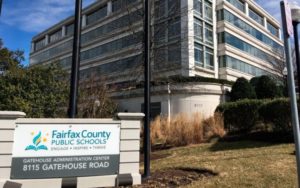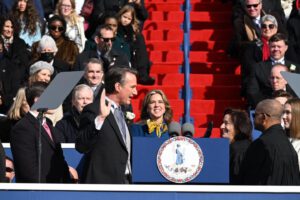Virginia school rankings yields a rural surprise
(The Center Square) – U.S. News & World Report recently released its rankings of Virginia K-12 public schools, and the results are primarily unsurprising – except for one school that…

(The Center Square) – U.S. News & World Report recently released its rankings of Virginia K-12 public schools, and the results are primarily unsurprising – except for one school that placed second among state middle schools and sixth among the commonwealth’s elementary schools.
Virginia’s largest school district, Fairfax County Public Schools, dominates the state’s top 10 high schools, middle and elementary schools, boasting 16 of the top 30 K-12 schools. Most of the other leaders were either from the state capital region – the city of Richmond or Henrico County, Northern Virginia suburbs or the commonwealth’s fourth-largest school district, Virginia Beach.
Hours from the state’s bustling population centers in an oft-forgotten corner of the state emerges a name: a St. Paul Elementary, nestled among the Appalachians in Wise County. U.S. News & World Report describes the school’s location as a “distant rural setting.”
Despite its religious name, St. Paul is a regular public K-8 school with 497 students and no special admissions policy or application process. Like several other schools in its district, St. Paul is a Title I school, meaning it receives additional federal funding because it serves a high percentage of lower-income families.
Principal Karen Dickenson has served in her role for over seven years, and she attributes the school’s success to a few things, including great attention to detail and quick remediation.
“I feel like this school is where we’re at today because our expectations are so high. We look at each individual child as an individual; we don’t look at subgroups. And we’re truly a data-driven school. We know where our kids are at and what they need to work on,” Dickenson told The Center Square.
Dickenson was one of several people The Center Square spoke to who highlighted the school’s reliance upon data.
Teachers have data binders for every student – not just those who are struggling – cataloging students’ strengths, weaknesses, progress and challenges in key subject areas.
Teachers are to routinely update the binders (daily and weekly, according to Dickenson), regularly recording new information for each student. Teachers compile that month’s data at the end of each month and submit it to Dickenson for review.
“I evaluate the data monthly and we track kids that aren’t making progress, and we put interventions in place,” Dickenson said.
Perhaps the school has seen success using this method because its student-to-teacher ratio is lower than the average for a public school – 10:1 versus about 15:1.
Technology teacher and reading coach Gina Almarode has taught for six years in Wise County, typically working with students from first through fourth grade. She echoed Dickenson’s remarks on intervention at St. Paul.
“We do not wait until the end of the year to remediate just for the SOL,” Almarode told The Center Square, referring to the state’s Standards of Learning tests. “We have been in remediation in small groups since the beginning of school because we want to see student growth versus SOL scores… We can usually get the scores because of the day in, day out.”
Almarode also underscored the school’s focus on building strong relationships with students’ families.
“The difference in our school is that we do emphasize a strong family engagement. We like to make positive connections with families and our kids. We have a Family Engagement Coordinator. But we also do that as individual teachers – not only when we have to call parents, but we like to make positive connections with parents all year long,” Almarode said.



